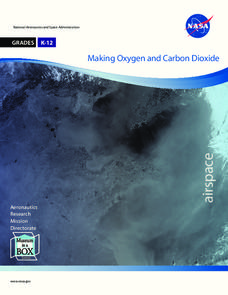NASA
Just How Far is That Star?
Pupils often wonder how we know the distance to various stars. Starting with a thought experiment and progressing to a physical experiment, they determine the brightness and distance to various stars. The evaluation requires critical...
NASA
Making Oxygen and Carbon Dioxide
Some like it hot! Scholars observe both exothermic and endothermic reactions as part of the carbon dioxide oxygen cycle. First, scientists demonstrate (or watch) a chemical reaction to create pure oxygen using fire for confirmation....
Science 4 Inquiry
The Impact of the Sun and Moon on Tides
In 150 BC, Seleucus of Seleucia theorized that the moon causes the tides. Scholars learn about what causes tides by studying the interactions of gravity between the sun, moon, and Earth. They use technology to formalize otherwise...
Kansas Music Educators Association
Games for the Elementary Music Classroom
Perfect for music specialists, classroom teachers, and substitutes, a packet of 18 games includes complete lessons as well as short activities for when you have some extra time at the end of class.
International Technology Education Association
Singin' the Black and Blues
How does the color of the sky change from blue to reds and oranges to black? An illuminating lesson explains how light travels through different mediums using the sun's light as an example. By examining diagrams and illustrations, pupils...
American Museum of Natural History
What is Astronomy?
Go study the universe. Pupils learn seven aspects about astronomy and astronomers. They begin to learn about constellations; distance and motion between objects; gravity; the electromagnetic spectrum; dark matter and energy; and teams of...
Other popular searches
- Galaxies 5 E's
- Stars and Galaxies
- Types of Galaxies
- Milky Way Galaxies
- Universe Stars Galaxies
- Universe and Galaxies
- Classifying Galaxies
- Galaxy Galaxies
- Active Galaxies
- Galaxies and Space
- Solar System Galaxies
- Spiral Galaxies







